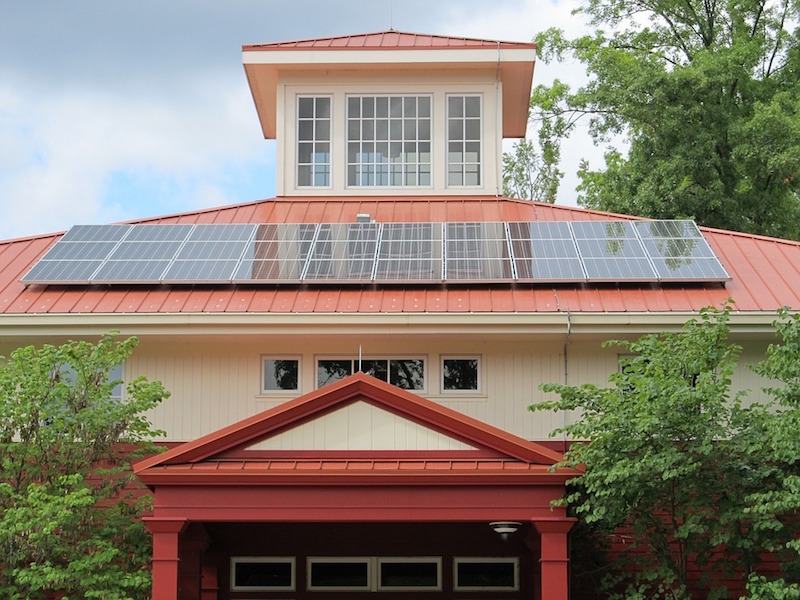The U.S. Green Building Council (USGBC) has formally adopted RELi, a resilience rating system, meaning that it will soon become a global rating system under the USGBC’s guidance.
RELi is patterned on LEED, but prescribes methods for designing more resilient buildings, neighborhoods, and communities. The system was developed in 2012 by design firm Perkins+Will, the Institute for Market Transformation to Sustainability (MTS), and others.
RELi will be managed and operated by USGBC and the Green Business Certification, Inc. (GBCI). The system helps architects, city planners, developers, governments, and businesses design buildings, neighborhoods, and communities to better withstand events such as hurricanes, super storms, drought, heat waves, earthquakes, and social volatility.
RELi will award points for various credits across multiple credit categories, incorporating many LEED prerequisites and credits for sustainability. It will also include new criteria focused on environmental, social, and economic considerations for resilience. These can include:
- Fundamental Access to First Aid Emergency Supplies, Water, Food, and Communications
- Adaptive Design for Extreme Rain, Sea Rise, Storm Surge, and Extreme Weather, Events, and Hazards
- Developing or Expand Local Skills, Capabilities, and Long-Term Employment
- Providing for Social Equity and Edible Landscaping, Urban Agriculture, and Resilient Food Production
Related Stories
Legislation | Mar 21, 2024
Bill would mandate solar panels on public buildings in New York City
A recently introduced bill in the New York City Council would mandate solar panel installations on the roofs of all city-owned buildings. The legislation would require 100 MW of solar photovoltaic systems be installed on public buildings by the end of 2025.
Office Buildings | Mar 21, 2024
BOMA updates floor measurement standard for office buildings
The Building Owners and Managers Association (BOMA) International has released its latest floor measurement standard for office buildings, BOMA 2024 for Office Buildings – ANSI/BOMA Z65.1-2024.
Codes and Standards | Mar 18, 2024
New urban stormwater policies treat rainwater as a resource
U.S. cities are revamping how they handle stormwater to reduce flooding and capture rainfall and recharge aquifers. New policies reflect a change in mindset from treating stormwater as a nuisance to be quickly diverted away to capturing it as a resource.
Plumbing | Mar 18, 2024
EPA to revise criteria for WaterSense faucets and faucet accessories
The U.S. Environmental Protection Agency (EPA) plans to revise its criteria for faucets and faucet accessories to earn the WaterSense label. The specification launched in 2007; since then, most faucets now sold in the U.S. meet or exceed the current WaterSense maximum flow rate of 1.5 gallons per minute (gpm).
Adaptive Reuse | Mar 15, 2024
San Francisco voters approve tax break for office-to-residential conversions
San Francisco voters recently approved a ballot measure to offer tax breaks to developers who convert commercial buildings to residential use. The tax break applies to conversions of up to 5 million sf of commercial space through 2030.
Codes and Standards | Mar 15, 2024
Technical brief addresses the impact of construction-generated moisture on commercial roofing systems
A new technical brief from SPRI, the trade association representing the manufacturers of single-ply roofing systems and related component materials, addresses construction-generated moisture and its impact on commercial roofing systems.
MFPRO+ News | Mar 12, 2024
Multifamily housing starts and permitting activity drop 10% year-over-year
The past year saw over 1.4 million new homes added to the national housing inventory. Despite the 4% growth in units, both the number of new homes under construction and the number of permits dropped year-over-year.
Affordable Housing | Mar 11, 2024
Los Angeles’s streamlined approval policies leading to boom in affordable housing plans
Since December 2022, Los Angeles’s planning department has received plans for more than 13,770 affordable units. The number of units put in the approval pipeline in roughly one year is just below the total number of affordable units approved in Los Angeles in 2020, 2021, and 2022 combined.
Codes and Standards | Mar 7, 2024
Public comments sought on measuring lifecycle of greenhouse gas emissions of buildings
ASHRAE and the International Code Council seek comments on their jointly developed document, Proposed ASHRAE/ICC Standard 240P—Quantification of Life Cycle Greenhouse Gas (GHG) Emissions of Buildings.
Green | Mar 5, 2024
New York City’s Green Economy Action Plan aims for building decarbonization
New York City’s recently revealed Green Economy Action Plan includes the goals of the decarbonization of buildings and developing a renewable energy system. The ambitious plan includes enabling low-carbon alternatives in the transportation sector and boosting green industries, aiming to create more than 12,000 green economy apprenticeships by 2040.

















